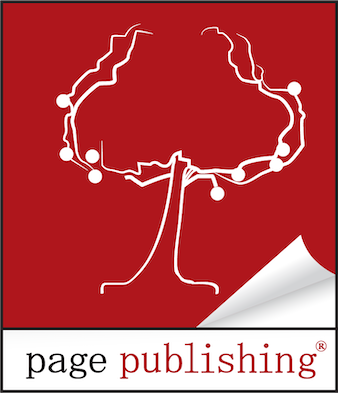
A Guide to Common Book Formatting Terms
Formatting is how your book looks on the inside. It includes aesthetic choices like fonts and chapter headings and technical decisions such as spacing and margins. They may sound minor, but these things all add up to the whole package that is your professionally formatted book. Whether you’re self-publishing and doing the formatting yourself or working with a professional, you’ll probably come across terms that may be unfamiliar. However, it’s essential to understand the language of book design to make the right choices for your work. Here is a list of common book formatting terms authors should know:
Ascender / Descender
Ascenders and descenders are parts of letters that extend beyond the cap height. For instance, lowercase p, g, and y are descenders because they have a “tail” that hangs down, and lowercase h, l, and d are ascenders because they extend up.
Baseline
The baseline is the invisible line on which the text sits. Descenders will extend below the baseline. The baseline is important for keeping text straight, and it is also used for spacing purposes.
Bleed
Bleed refers to a printed design that goes to the edge of a page (or runs off the page). It is a term mostly related to picture books or books with illustrations and book covers. If a book has “no bleed,” the image stops short of the edge of the page, leaving a white border.
Blind folio
A blind folio is a page number that is not printed on the page. For instance, the first few pages of a book that contain the front matter (copyright, title page, dedication, etc.) typically do not have page numbers. In this case, Page 1 would start on a later page.
CMYK vs. RGB
Both CMYK and RGB are color modes but for different end uses. CMYK is intended for printed materials and is a combination of the colors cyan, magenta, yellow, and black. RGB blends the primary colors of red, blue, and green and is used for screen display. Because of the way the colors mix, CMYK can produce a darker, richer result. When it comes to book formatting and printing, designers will use CMYK.
Crop marks
Crop marks are the physical or digital lines that indicate the final trim size. They can be used as cut lines in the printing and binding process or as guides for the digital cover design.
DPI & PPI
DPI stands for dots per inch, and PPI for pixels per inch. Both terms describe an image’s resolution but are used in different contexts.
DPI describes the resolution of printed images and refers to the number of ink dots per inch. PPI describes the resolution of digital images and refers to the number of pixels present per inch. A higher number for either results in higher-resolution images with more detail. Books should strive for images that contain a minimum of 300 DPI.
Drop caps
A drop cap is when a paragraph or chapter’s first character (usually the first letter of the first word) is enlarged. Drop caps give your book an elegant or professional feel.
Folio
A fancy word for “page numbers,” folio comes from the early days of printing. A few rules for page numbering include:
- Odd numbered pages on the right
- Even numbered pages on the left
- Never page number the front matter (referred to as blind folio)
- Start page 1 with the first page of text
- Don’t place page numbers near the gutter
Grayscale
Grayscale is a color mode that uses only black, white, and shades of gray. Some novels that contain images like maps use it. When it comes to printing, grayscale is less expensive than color printing.
Gutter
A gutter is the blank space between two facing pages of a book or a magazine, where the pages are bound together. The gutter is where the spine of the book or magazine is located, and it is usually the area that is most difficult to read because the binding partially obscures it.
Considering the gutter when designing a page spread is vital. If the content is too close to the gutter, it may become lost or obscured in the binding process, making it difficult to read or appreciate.
Margin
Margins are the blank perimeter around the text of a book. There are four types of margins: top, bottom, outside, and inside. Margin size often depends on the trim size and the number of pages in the book. Typical margin sizes for books range from 0.5 to 0.75 inches. The exception is the inside margin, also called the gutter, which requires a larger margin to accommodate readability.
Justification
Justification refers to the edge of the text and whether it is straight or jagged. Most text is left justified (or left flush), meaning the left-hand side is straight. If a text is Justified, the words have been spaced out so that the left and right edges are straight.
Kerning
Kerning refers to the space between letters. Adjusting the default kerning can make the text more visually pleasing. It can eliminate awkward gaps and improve legibility.
Leading
Leading is the white space between lines of text. It’s a fancy way to refer to spacing. Having a proper leading size will make readability easier. Most novels are published with single-spaced lines. However, you can adjust the leading for additional space after the baseline. To give each line some breathing room, consider a 1.1 to 1.5 leading.
Page, Leaf, Spread
A page and leaf both refer to a single sheet of paper, either the right-hand or left-hand side of the book. A spread is the two facing pages when you open the book flat. For picture books, planning the spread for visual purposes is important.
Serif vs. Sans Serif
These terms refer to the style of the font. Serif fonts have decorative “tails” (lines/tapers) at their ends. They’re often considered more ornamental, sophisticated, and traditional. Sans serif—from the French meaning “without” —do not have these finishing strokes. They are cleaner and simpler. Times New Roman is an example of a Serif font, and Arial is an example of a Sans Serif font.
Trim size
The trim size is the final size of the finished book. Common trim sizes for novels include 6” x 9” and 5.5” x 8.5”. Some genres or categories may lean toward a larger or smaller trim size. For instance, mass market books are typically around 4.25” x 6.5”, whereas children’s picture books can be all sorts of sizes.
Widow / Orphans
Widows and orphans refer to the last line or word being left alone at the bottom or top of a page. It’s “stranded” or separated from the rest of the paragraph and is considered visually unappealing.
